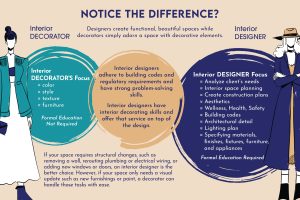Have you ever dreamed of creating a space in your home that’s so beautiful and functional it belongs on your bucket list? Whether you envision a spa-like retreat or an aging-in-place transformation, one of the most important decisions is who to hire for a home remodel, because hiring the right expert at the right time can make all the difference.
Why Starting with a Contractor Can Lead to Costly Mistakes
When homeowners start planning a remodel, their first call is often to a contractor. That might feel like the natural move because, after all, they’re the ones who build the thing, right? But resist that instinct. Without a clear and complete design plan, even the best contractor can’t give you an accurate estimate or timeline. That’s how remodel budgets spiral out of control and timelines stretch into frustration.
Contractors are experts in construction, NOT design. If you skip hiring a qualified interior designer, you may end up with a space that doesn’t function the way you envisioned or, worse, one that needs to be redone at significant cost. Unfortunately, we hear about this all the time, but luckily, you can avoid these issues by having a professional design plan.
Note: If a contractor tells you they can do both the design and construction, ask for the designer’s name and credentials!
Start With an Interior Designer
If your remodel does not involve an addition or a new dwelling, the best first step is to hire an interior designer who is experienced in remodel design, will personalize your space based on your needs and wants, and one you will enjoy working with. Be sure you’re working with a true interior designer and not an interior decorator -there’s a difference and these titles are often confused or misused.
To make sure you’re hiring a qualified professional, ask if they have a college degree in Interior Design. That education means they understand both the art and the science of design—blending aesthetics, functionality, safety, and construction know-how into a holistic vision for your remodel.
A good interior designer will:
- Translate your ideas into a functional and beautiful spatial design plan
- Create visual concepts and color palettes
- Guide material selection
- Produce construction drawings
- Help you navigate budgeting and planning
- Recommend and coordinate with additional professionals as needed
Your design drawings will then be used for construction estimating, as a roadmap for the contractor during construction, and to obtain a building permit, if necessary. Some designers also provide construction oversight, helping ensure the vision is executed with precision.
What If Your Remodel Involves an Addition or New Construction?
If your remodel involves adding to your home or building a new guest house, the best first step is hiring an architect. Architects focus on the overall structure, spatial planning, and code compliance. Ideally, your architect and interior designer will work together throughout the process to align form and function both inside and out.
In the interviewing process, it’s good to let the architect know that you’ll also be working with an interior designer. Then, once the plans are prepared, the interior designer, architect, and contractor do an onsite walk-through to review the new plans. This helps everyone invloved to gain a full understanding of the project and scope of work in order to prepare an accurate estimate.
Choosing the Right Contractor (At the Right Time)
Once your design and plans are ready, it’s time to bring in a licensed contractor. For the best experience, choose one who is:
- Licensed with the Arizona Registrar of Contractors (ROC)
- Bonded and insured
- Experienced in residential remodeling
- Recommended by your designer or architect
Good contractors are often booked far in advance, but your designer or architect may have established relationships that help you get on the schedule sooner. Plus, they’ll know which contractors are dependable, stick to timelines, and deliver high-quality work.
Together with a great design plan, these are the things that make a project flow well and produce the desired outcomes.

Interior Designers vs. Architects vs. Interior Decorators
Understanding who does what can save you time, money, and stress. Here is a simple breakdown:
- Interior Designers (with formal training) focus on interior architecture, layout, lighting, materials, building codes, safety, color, style, texture, fabrics, furniture, window treatments, durability, acoustic properties, cleanability, aesthetics, ADA standards, and functionality. They prepare construction drawings and ensure the design works for your life.
- Architects have a degree in architecture and focus on building structures, exterior elements, code compliance, renderings, and construction drawings.
- Interior Decorators focus on aesthetics, including color, style, texture, furniture, and décor selection, but they typically lack formal design training and don’t create construction documents.
If your remodel includes structural changes like removing walls, rerouting plumbing, or modifying windows, an interior designer is a must. A decorator may be suitable for purely cosmetic updates like furnishings or flooring.
Set Your Remodel Up for Success
With a solid design plan, the right professionals, and a thoughtful approach to your project, your home remodel can be everything you dreamed of and more. Don’t underestimate the value of a qualified interior designer to guide the process from concept to completion.

Read More in Later Life Living Magazine
This article is featured in Later Life Living Magazine, where you can discover more about these expert tips and see award-winning home transformations by Bonnie J. Lewis Design. Click through to explore the full issue and start planning your dream remodel today.

